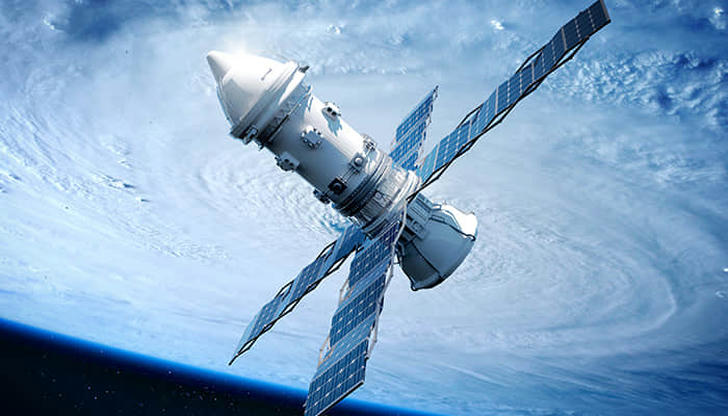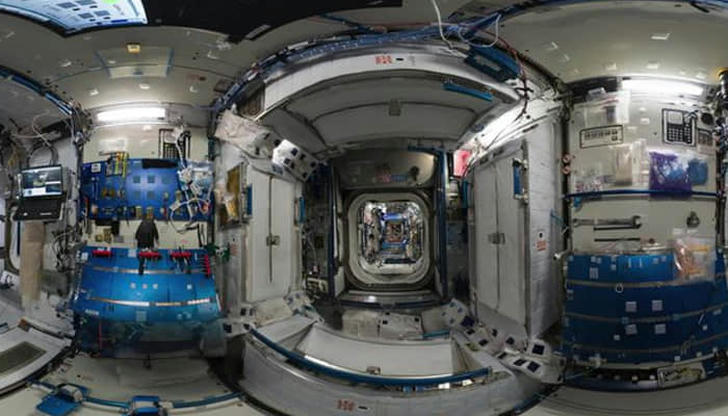Space Station Needs Heat Dissipation. Will People Freeze to Death in Space?

When we talk about the temperature of space, we often think of it as near absolute zero. This is because most areas of space are vast and empty, devoid of matter, and thus lack heat transfer. However, this raises an interesting question: why do human space stations in space need to "cool down" instead? It's like wearing a T-shirt to cool off in the midst of heavy snowfall. Where does the space station get its heat?

Relationship Between Microscopic Molecular Movement and Temperature
Heat, omnipresent in our lives, is a physical quantity that we often feel but find difficult to define intuitively. Its essence can be traced back to the movement of molecules in the microscopic world. When we talk about temperature, we are actually describing the state of motion of tiny particles within matter.
At the molecular level, temperature manifests as the movement of molecules. Imagine countless tiny molecules in any substance constantly moving and colliding like insignificant little balls.
The speed of movement and frequency of collisions of these molecules determine the perceived temperature. When molecules move rapidly and collide frequently, we feel a higher temperature; conversely, when molecular movement is relatively slow, the temperature feels lower.
At the same time, the temperature of the universe is also relative. Although there is an absolute zero temperature limit in the universe, it is relative to the average molecular motion of matter.

Heat Transfer in the Universe
In a vacuum, where there's a lack of medium for heat transfer, heat exchange between molecules primarily occurs through radiation. Therefore, even though the average temperature of space approaches absolute zero, certain areas may experience relatively higher temperatures due to factors like stellar radiation and cosmic microwave background radiation.
Stellar bodies like the Sun continuously release vast amounts of energy through nuclear fusion, which propagates as electromagnetic radiation, contributing to the heat in the universe. This mode of transfer is relatively unfamiliar on Earth because we reside in an atmosphere filled with gases, which are efficient heat conductors. In space, such gas mediums are almost nonexistent, making heat transfer more complex.
This radiation traverses the void, intertwining with the radiation from other astronomical objects, collectively shaping the temperature distribution in the universe. It's due to this uniqueness that space stations require heat dissipation.
Why Do Space Stations Require Heat Dissipation?
Space stations orbit in low Earth orbit, where the atmosphere, though considerably thin, still feels the influence of solar radiation. Solar radiation, including visible light, ultraviolet, and infrared radiation, is partially absorbed by the space station's hull and converted into heat energy, causing the station to heat up.

Simultaneously, various electronic devices and machinery inside the space station generate heat during operation, such as communication equipment, life support systems, and scientific instruments. This heat is absorbed by the space station's air conditioning system and discharged through radiators out of the station to prevent overheating inside the station. This series of heat generation and transfer processes constitute a unique and complex thermal equilibrium system in space. If we ignore these heat sources, the internal temperature will rise rapidly, causing a series of serious consequences.
• Equipment overheating may lead to malfunction
Firstly, high temperatures may cause equipment to overheat, leading to damage or loss of normal function. Various complex electronic components in spacecraft are highly sensitive to temperature, and excessive temperatures can affect their performance or even cause malfunctions.
• Overheating affects astronauts' physical health
Secondly, for astronauts, high temperatures pose a serious health threat. The confined space within the spacecraft can become stuffy due to high temperatures, affecting the efficiency of astronauts' work and potentially causing health issues like heatstroke.
• Overheating hampers scientific experiments
Furthermore, various instruments and scientific experiments on the space station also have specific temperature requirements. Excessive or insufficient temperatures may negatively affect experimental results or even render some experiments unable to proceed normally.

A Space Mission Failure Due to Inadequate Heat Dissipation
In the history of space exploration, there are instances where the lack of effective thermal management measures has led to the failure of spacecraft or satellites. One of the most notable cases is the Challenger disaster in 1986.
On January 28, 1986, the American space shuttle Challenger disintegrated and crashed just 73 seconds after liftoff, resulting in the deaths of all seven crew members. An investigation revealed that the explosion was caused by the failure of rubber seals on the right solid rocket booster.
This fatal accident provided profound insights for space engineering. It underscored the importance of considering thermal management thoroughly in the design and manufacture of space probes. With the absence of traditional air or liquid thermal mediums in space, designers must employ innovative thermal management techniques to ensure that spacecraft can operate normally under extreme conditions.
Conclusion
In the vast universe, space stations serve as both the home and workplace for humans venturing into the cosmos. Through a deeper understanding of thermal transfer principles in space and the heat sources within space stations, we realize the critical importance of maintaining thermal equilibrium in space exploration. The intricate design of space station thermal management systems not only ensures the safety of astronauts and the proper functioning of onboard equipment but also provides ideal conditions for scientific experiments and technological testing.
